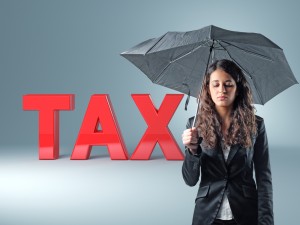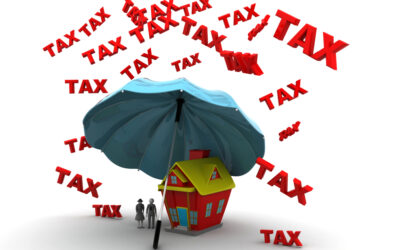What are the tax and investment considerations for a Granny Flat above versus a Tiny Home below? Income Tax Return Reporting - Income Streaming Tiny Homes Tiny home ownership does not have to follow the ownership interest of the underlying property ownership. For...
2015 Tax Rates & Thresholds Summary
Rates of Tax – 2014/15
 Resident Individuals
Resident Individuals
The following rates apply to individuals who are residents of Australia for tax purposes for the entire income year.
| Taxable Income1$ | Tax Payable2,3 |
| 0 – 18,200 | Nil |
| 18,201 – 37,000 | 19% of excess over $18,200 |
| 37,001 – 80,000 | $3,572 + 32.5% of excess over $37,000 |
| 80,001 – 180,000 | $17,547 + 37% of excess over $80,000 |
| 180,001+ | $54,547 + 47%4 of excess over $180,000 |
- The tax-free threshold may effectively be higher for taxpayers eligible for the low-income tax offset, the Seniors and Pensioners Tax Offset and/or certain other tax
- The above rates do not include the Medicare Levy (2% from 1 July 2014, previously 5%).
- As part of the 2015/16 Federal Budget, the government announced that, with effect from 1 July 2015, individual taxpayers with business income from an unincorporated business that has an aggregate annual turnover of less than $2 million will be eligible for a small business tax The discount will be 5% of the income tax payable on the business income received from an unincorporated small business entity. The discount will be capped at $1,000 per individual for each income year and will be delivered as a tax offset.
- This rate includes the 2% ‘Temporary Budget Repair Levy’ which applies from 1 July 2014 until 30 June 2017 on that part of a person’s taxable income that exceeds $180,000.
Non-resident Individuals
The following rates apply to individuals who are not residents of Australia for tax purposes for the entire income year:
| Taxable Income$ | Tax Payable1,2 |
| 0 – 80,000 | 32.5% of the entire amount |
| 80,001 – 180,000 | $26,000 + 37% of excess over $80,000 |
| 180,001+ | $63,000 + 47%3 of excess over $180,000 |
- Medicare Levy is not payable by non-residents.
- As part of the 2015/16 Federal Budget, the government announced that, with effect from 1 July 2015, individual taxpayers with business income from an unincorporated business that has an aggregate annual turnover of less than $2 million will be eligible for a small business tax The discount will be 5% of the income tax payable on the business income received from an unincorporated small business entity. The discount will be capped at $1,000 per individual for each income year and will be delivered as a tax offset. At the time of writing, no information was available regarding if and how this proposal applies to non-resident individuals.
- This rate includes the 2% ‘Temporary Budget Repair Levy’ which applies from 1 July 2014 until 30 June 2017 on that part of a person’s taxable income that exceeds $180,000.
Resident Minors – Unearned (Division 6AA) Income
The following rates apply to the income of certain minors (e.g., persons under 18 years of age on the last day of the income year who are not classed as being in a full-time occupation) that is not excepted income (e.g., employment income):
| Division 6AA Income$ | Tax Payable1,2,3 |
| 0 – 416 | Nil |
| 417 – 1,307 | 68% of excess over $416 |
| 1,308+ | 47% of the entire amount |
- The 2% Medicare levy is not included but may
- Resident minors are not entitled to the low-income tax offset in respect of ‘unearned’
- The effect of the 2% ‘Temporary Budget Repair Levy’ which applies from 1 July 2014 until 30 June 2017 has been included in the above
Non-resident Minors – Unearned (Division 6AA) Income
The following rates apply to the income of certain non-resident minors (e.g., non-resident persons under 18 years of age on the last day of the income year who are not classed as being in a full-time occupation) that is not excepted income (e.g., employment income):
| Division 6AA Income$ | Tax Payable1,2 |
| 0 – 416 | 34.5% of the entire amount |
| 417 – 663 | $143.52 + 68% of excess over $416 |
| 664+ | 47% of the entire amount |
- The Medicare Levy is not payable by non-residents.
- The effect of the 2% ‘Temporary Budget Repair Levy’ which applies from 1 July 2014 until 30 June 2017 has been included in the above
Pro-Rated Tax-Free Threshold – Non-residents
The tax-free threshold that applies to residents ($18,200 per annum in 2013/14 and 2014/15) is effectively pro-rated in an income year in which a taxpayer either ceased to be, or became, a resident for tax purposes. For the 2014/15 income years the pro-rated threshold will be calculated using the following formula:
$13,464 + ($4,736 x number of months taxpayer was resident for the year ÷ 12)
Genuine Redundancy Payments
The tax-free amount of a genuine redundancy payment in 2014/15 is $9,514 plus $4,758 for each completed year of service.
S.99 Assessment – Resident Deceased Estate
 The following rates apply where a trustee is assessed under S.99 of the ITAA 1936 in respect of a resident deceased estate. Where the date of death is less than 3 years before the end of the income year, the trustee is assessed as a resident individual.
The following rates apply where a trustee is assessed under S.99 of the ITAA 1936 in respect of a resident deceased estate. Where the date of death is less than 3 years before the end of the income year, the trustee is assessed as a resident individual.
| Taxable Income$ | Rate1% |
| Less than 3 years since death | |
| 0 – 18,200 | Nil |
| 18,201 – 37,000 | 19% of excess over $18,200 |
| 37,001 – 80,000 | $3,572 + 32.5% of excess over $37,000 |
| 80,001 – 180,000 | $17,547 + 37% of excess over $80,000 |
| 180,001+ | $54,547 + 47%2 of excess over $180,000 |
| 3 years or more since death | |
| 0 – 416 | Nil |
| 417 – 670 | 50% of excess over $416 |
| 671 – 37,000 | $127.30 + 19% of excess over $670 |
| 37,001 – 80,000 | $7,030 + 32.5% of excess over $37,000 |
| 80,001 – 180,000 | $21,005 + 37% of excess over $80,000 |
| 180,001+ | $58,005 + 47%2 of excess over $180,000 |
- Medicare Levy does not apply to S.99 assessments of deceased estate
- This rate includes the 2% ‘Temporary Budget Repair Levy’ which applies from 1 July 2014 until 30 June 2017 to the extent taxable income exceeds $180,000.
See list of typical occupational tax deductions for your job



